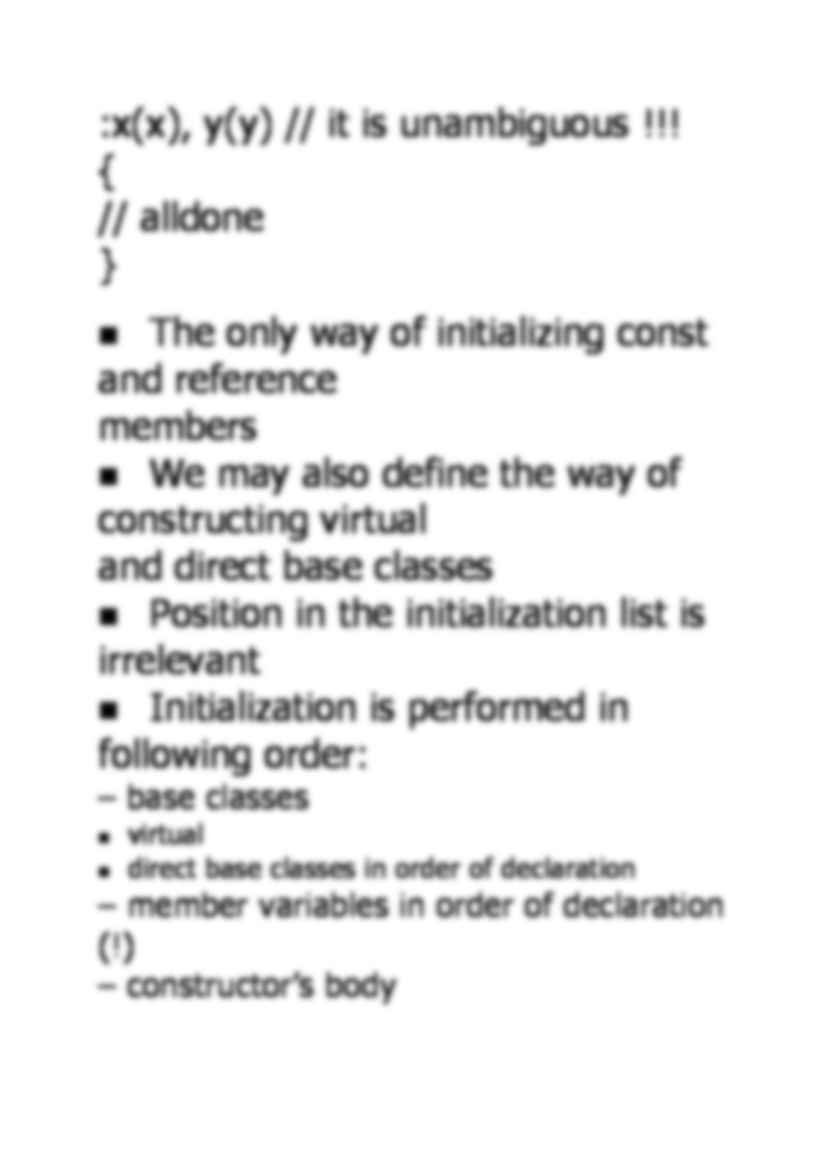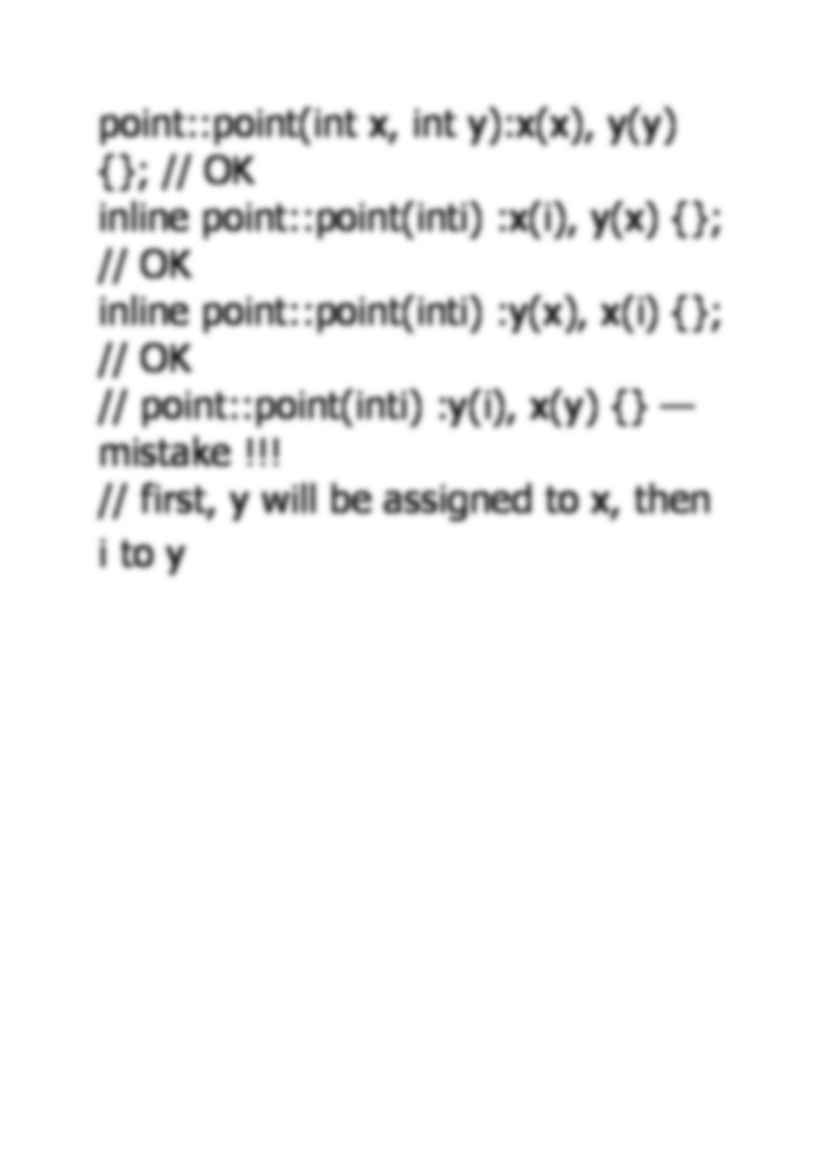To tylko jedna z 3 stron tej notatki. Zaloguj się aby zobaczyć ten dokument.
Zobacz
całą notatkę



Initialization list in a definition of a constructor (and only there) we may use an initialization list T() : member(initializer) [, member(initializer) …] { } class point { double x, y; public: // … point():x(0.0), y(0.0) {}; }; inline point::point(double d) :x(d), y(d) { // all done } point::point(double x, double y) :x(x), y(y) // it is unambiguous !!! { // all done } The only way of initializing const and reference members We may also define the way of constructing virtual and direct base classes Position in the initialization list is irrelevant Initialization is performed in following order: - base classes virtual direct base classes in order of declaration - member variables in order of declaration (!) - constructor's body point::point(int x, int y):x(x), y(y) {}; // OK inline point::point(int i) :x(i), y(x) {}; // OK inline point::point(int i) :y(x), x(i) {}; // OK // point::point(int i) :y(i), x(y) {} — mistake !!! // first, y will be assigned to x, then i to y
... zobacz całą notatkę






Komentarze użytkowników (0)